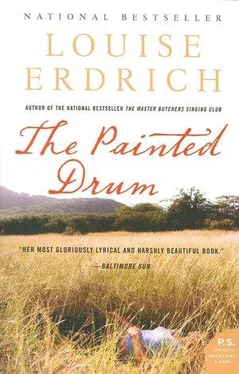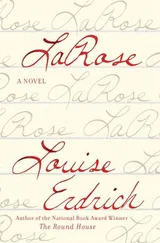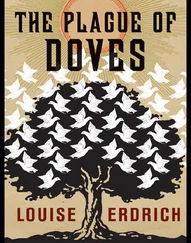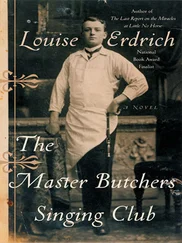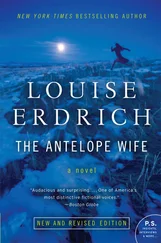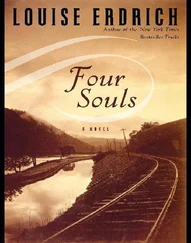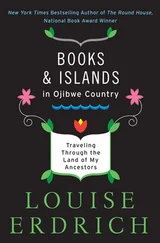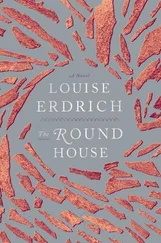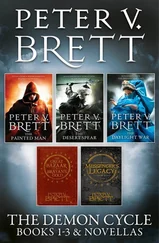Later, I heard that L.M.B. was a ferocious old bore in her age, critical, churchy, and prone to making complaint calls to the parents of young boys who cut across her front lawn or spoiled her tulips. But that’s what I mean by coming to life.
The estate of John Jewett and Burden Tatro comes into a similar focus when I make the acquaintance of a doll with a face of fawn-skin and eyes of jet. I know that the doll is something special the moment I put my hands on it. She is wrapped in faded red trade cloth and placed inside a shoe box. The shoe box is mistakenly stored upon a shelf of shoes, and when I open it I catch a whiff of smoked hide. It is a smell that could have accumulated molecule by molecule inside of the box only if it was not opened for a very long time. As I unwrap the doll, the fugitive taste of smoke vanishes and there is the doll herself, exquisite. The perfectly cured hide of her skin has somehow retained its softness, though from the faintly smudged darknesses on her arms and skirt I see she had been loved as a toy. Her red quill lips are stitched into a calm, amused smile, and her bead eyes are set at a lively angle. Her coarse black hair was plucked from a horse’s mane and each black thread sewn into her head and then divided into braids. Her dress is also made of tanned hide, decorated with bits of shell and the old antique beads called greasy yellow and ruby red whiteheart and german blue. Her waist is belted with a woven sash. Attached to it she wears a tiny scabbard that secures a tiny skinning knife. Her moccasins are sewn with flowers, and she wears jewelry. A ring of trade silver makes a bracelet on her arm. From her pierced fawnskin ears dangle miniature earbobs that are hawk’s bells so unusually small that they could hang from the throats of warblers. She carries a thimble-size basket woven so cleverly that I laugh in pleasure. I bring the doll out at once, and show her to Sarah.
“Oh, there she is!” She takes the doll from me and handles her with familiar tenderness, smoothing the coarse hair down and caressing the slender horsehair brows embroidered above the glittering eyes. “My uncles used to let me play with her if I was very good.”
“ She’s very good, you know. Valuable, I mean. We should have a museum curator look at her.”
“Yeah?” Sarah is surprised, but not particularly pleased. I think she feels the same way I do about the doll. It is personal—the delight of the doll’s presence has nothing to do with her worth.
“Were there other things, American Indian I mean, of that era?” I ask. “Did your uncles keep them all together somewhere? In a cabinet? Trunks?”
“Oh God, yes, I’d forgotten all about it. One of the Tatros way back lived with Indians,” she says. “There was a lot of old beadwork and stuff. Come on upstairs, I’ll show you.”
On the way up the stairs, I try to breathe slowly. There is an attic room of course—a long unfinished tar-papered hall lined with simple board shelves and stuffed with old suitcases. The major portion of the collected items are kept in the suitcases, Sarah tells me. There are as well some larger things wrapped in old bedspreads and horse blankets. We unveil these at once—a cradle board not as good as mine, large birch-bark winnowing baskets, a curious, beadworked footstool. A drum. The suitcases hold some precious examples of late-nineteenth- and early-twentieth-century bead and cloth-appliqué work. There are moccasins, leggings, beaded ceremonial breech clouts, a vest, and two bandolier bags (in extraordinary condition, worth a great deal). There are also a number of lesser items—small purses of the sort once sold to tourists, a band for a headdress from which the feathers are all removed, tobacco pouches, woven carrying straps and reed mats. We lay things out, unwrapped, on the tops of suitcases, draped off the edges of drawers and shelves, but stop eventually. The collection goes on and on.
“Congratulations,” I say. Sarah Tatro looks startled.
“Congratulations for what?”
“You can probably retire. Or at least take a long vacation. No more early-morning wake-up calls.”
“You think all this is valuable….”
“Very.”
Sarah drops to a trunk and stays there, puts her head in her hands. “You mean, they were sitting on this all along?”
I don’t reply and after a time she shakes her head and laughs shortly, without humor. “They were so cheap with themselves that they ate oatmeal for dinner. And they spread Crisco on their bread instead of butter. The taxes on this place had gone sky-high, of course, and they wanted to keep it. So they lived on nothing. But in the end”—her voice lifts—“I have to say I think they enjoyed their stinginess.” And then she laughs with more ease. “They probably enjoyed what they had here. You can see they went through things. Checked them for mildew or bugs, I guess, rewrapped them. Set mousetraps. Look.” She shows me the date on a newspaper that was used to cushion a lovely little sweet-grass basket. “Last year’s.”
“That’s fortunate,” I say, “the acid in the newspaper could have ruined that basket.” I move closer to look at the little coiled and sewn basket, and that is when I step close to the drum.
I’m not a sentimental person and I don’t believe old things hold the life of people. How can I? I see the most intimate objects proceed to other hands, indifferent to the love once bestowed. Some people believe objects absorb something of their owner’s essence. I stay clear of that. And yet, when I step near the drum, I swear it sounds. One deep, low, resonant note. I stop dead still, staring at the drum. I hear it, I know I hear it, and yet Sarah Tatro does not.
“I’m getting out of here,” she merely says. “Too dusty. I’ll be back later on this afternoon. I’ve got some errands in town.”
And so I am left with the original Tatro’s loot. I continue to stare at the drum, what I can see since it is mostly swaddled by a faded quilt. I don’t just hear things and I’m not subject to imaginative fits. There will be an explanation. Something shifting to strike the skin. A change in air pressure. The quilt isn’t anything special, a simple collection of squares, yarn-tied, the sort of thing sold at church bazaars. I step over to the drum and pull the fabric entirely away. The light comes from two bare bulbs with pull chains, and casts harsh shadows. The head of the drum glares out, huge, three feet across at least. The buffalo or moose skinned to make it must have been a giant. In spite of its size there is something delicate about the drum, though, for it is intricately decorated, with a beaded belt and skirt, hung with tassels of pulled red yarn and sewn tightly all around with small tin cones, or tinklers. Four broad tabs are spaced equally around the top. Into their beaded tongues of deep indigo four white beaded figures are set. They are abstract but seem to represent a girl, a hand, a cross, a running wolf. On the face of the drum, at the very center, a stripe is painted in yellow. That is all. The figurative detail, the red-flowered skirts, the tinklers, combined with the size of the drum, give it an unusual sense of both power and sweetness.
I draw a folding chair close, sit, and jot down the details. My hand drags across the page. This is the sort of find that would usually thrill me, but I am not pleased. I put down my pen. I am uneasy, anxious. I look around. I hope that Sarah has not returned from her errands yet. I set my hand on the drum and then I feel, pulled through me like a nerve, a clear conviction. It is visceral. Not a thought but a gut instinct. I cover the drum again with the quilt and go downstairs to make sure that Sarah is really gone. When I see that the garage is empty and I’ve called through the house to make certain I am alone, I prop open the back door and go straight back upstairs. I bundle the quilt more tightly around the drum, and then I carry it out of the house. I set my bundle on the gravel only briefly as I lift the hatch on my car, then I slide the drum into the cargo hold and hide it by pulling over it the theft-deterring blind I always use when parking at big auctions.
Читать дальше
